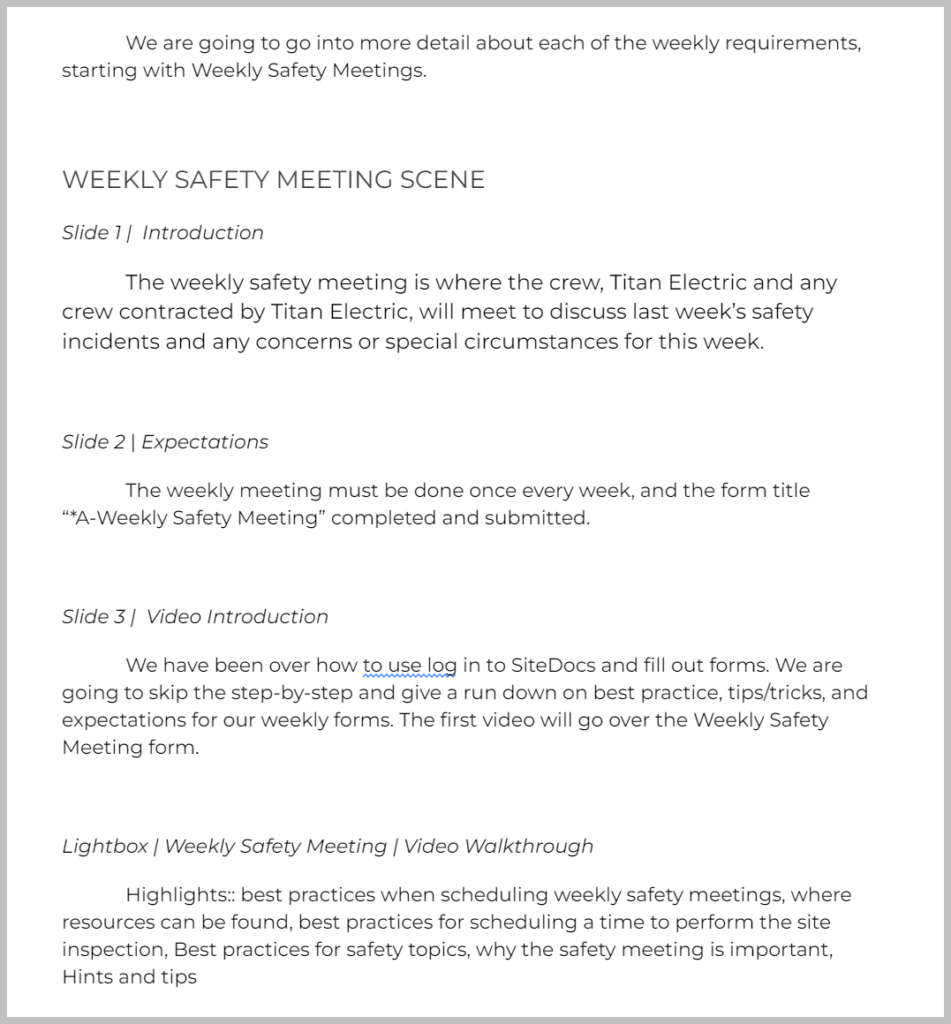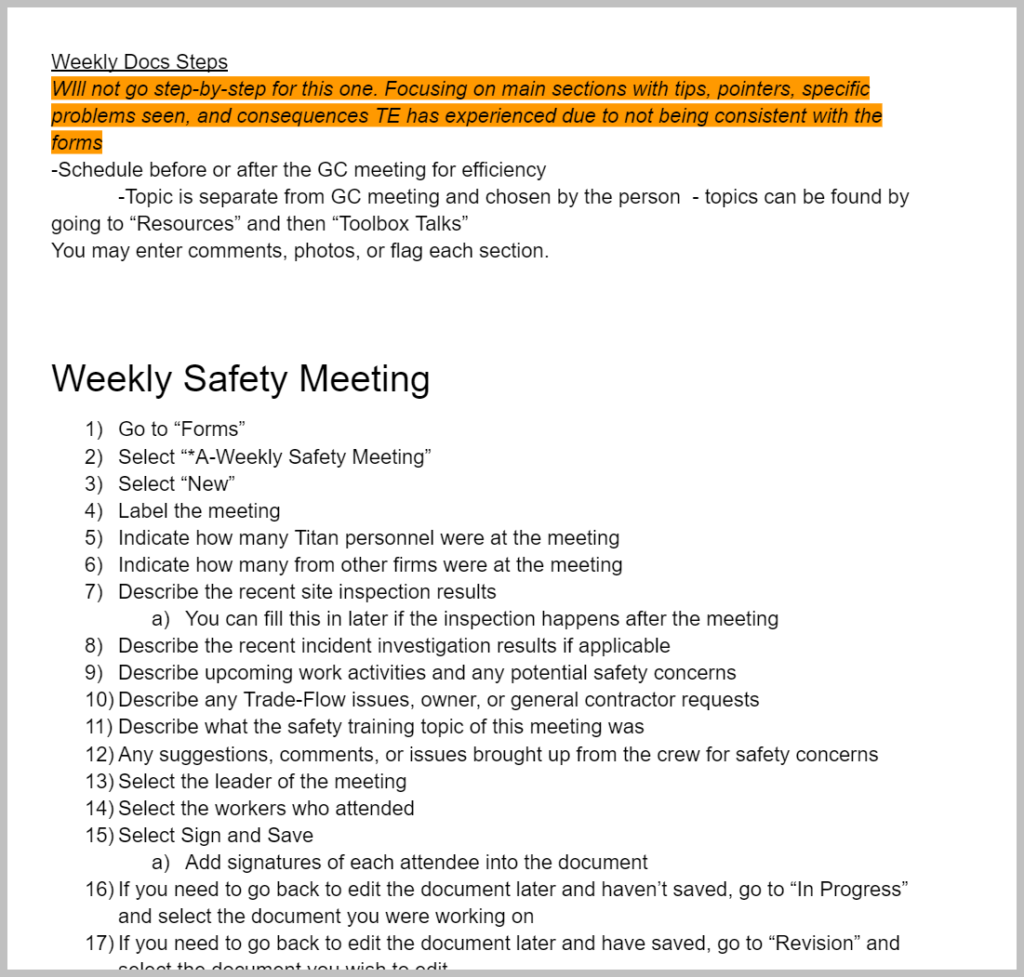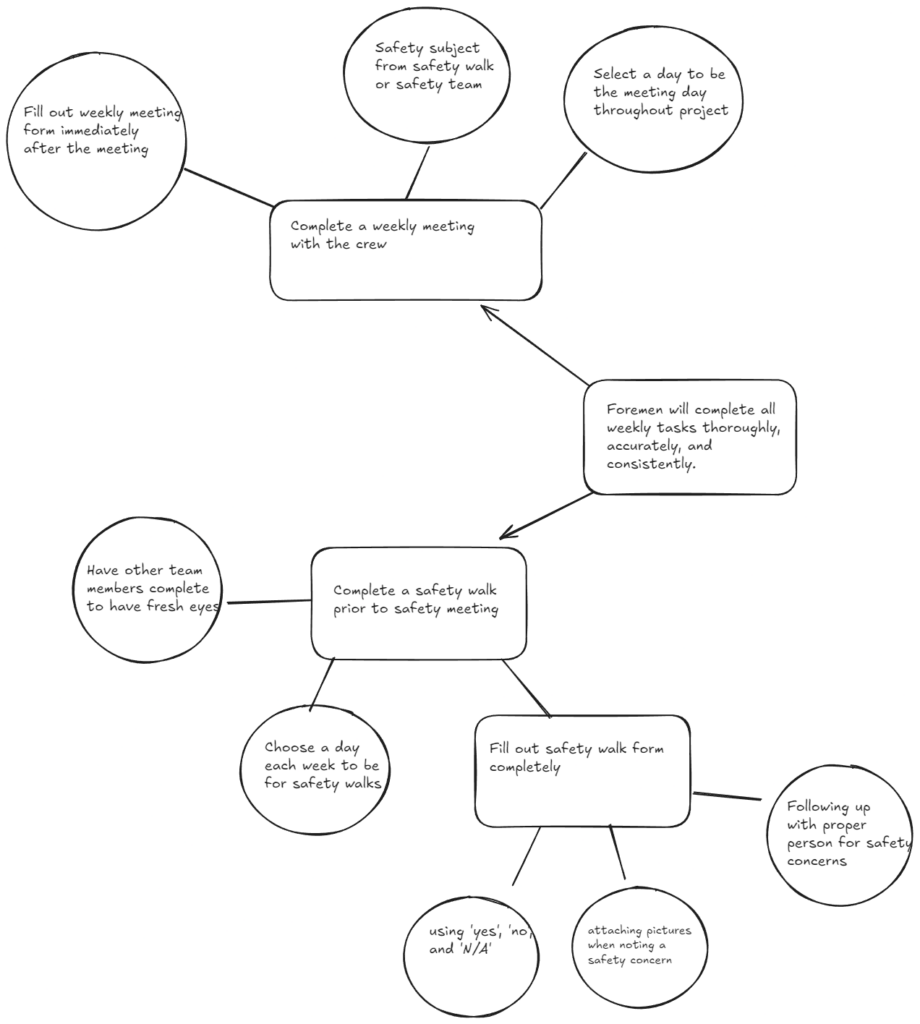Wired for Success: Onboarding with Software Simulations in the Electric Industry
I designed this program to onboard foremen – new and current – on company expectations for weekly duties.
Audience: Foremen at electric company
Responsibilities: Analysis, Instructional Design, eLearning Development, video production, voiceover
Tools Used: Camtasia, Snagit, Articulate Storyline, Audacity, Google Suite
ID Models Used: Mayers 12 Principles of Multimedia Design, SAM
Overview
This client didn’t have standardized procedures in place; each foreman and project manager had their own way of doing things. That led to inconsistencies, safety risks, and compliance issues. Our goal was to create an onboarding experience that introduced clear, standardized procedures to all employees, especially new hires, and helped everyone understand not just how to do things, but why it mattered.
Our Approach
To build something truly useful, I worked closely with a subject matter expert and key stakeholders to break down the core procedures they wanted to standardize. We focused on the ones that had the biggest impact like weekly meetings, documentation, and safety walkthroughs, and tied them directly to real-world examples from their job sites.
I used Articulate Storyline 360 to create interactive training that didn’t just tell employees what to do, but showed them why it was important. We used real photos from job sites, recreated walkthrough forms, and gave learners the chance to identify issues just like they would on the job. It was all about connecting theory to practice.
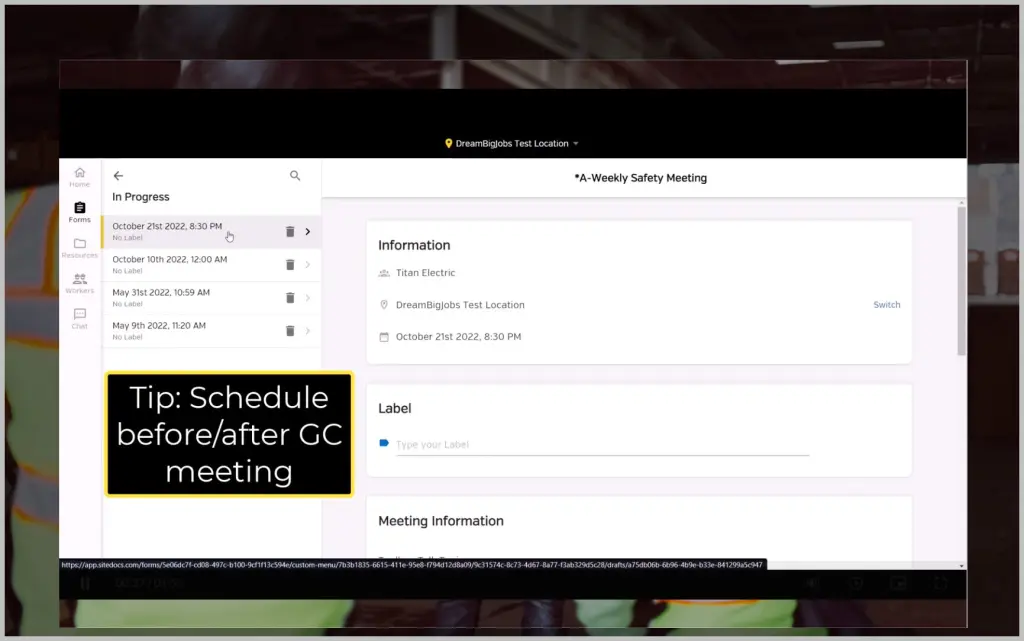
Making It Real
To drive the message home, we pulled in real incidents that had happened on-site due to missed steps or incomplete documentation. These examples helped learners understand the ripple effects of small mistakes—and how following procedures keeps everyone safer and more efficient.
We wrapped things up with a hands-on activity where learners used actual job site photos to practice filling out walkthrough forms. They also answered questions tied to the explainer video to reinforce their understanding and application of what they’d learned.
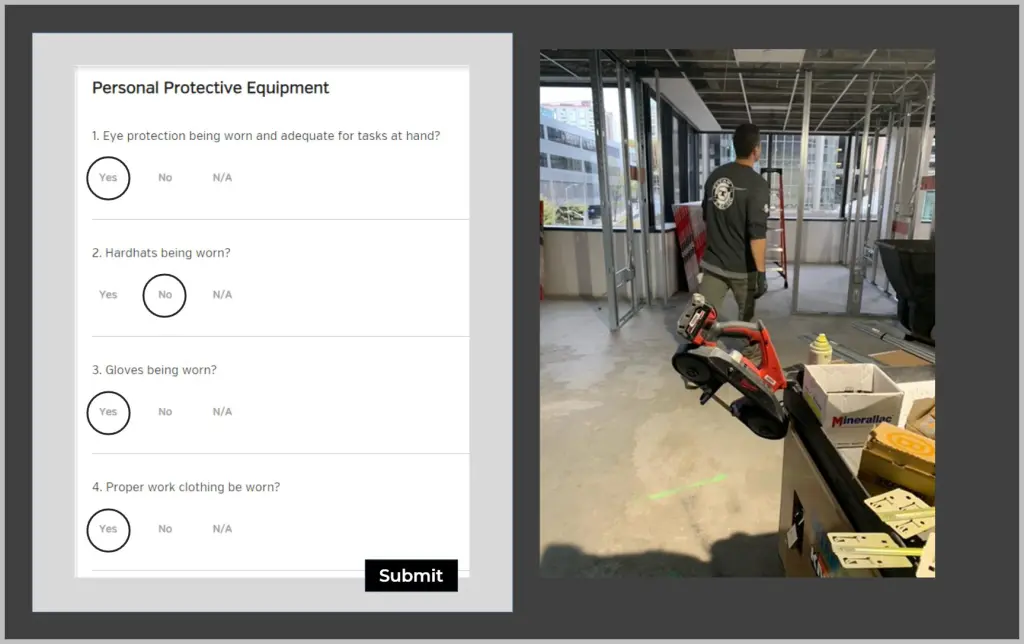
My Role & Tools
I led the instructional design, development, and production of the training, using:
-
Excalidraw for action mapping and goal-setting
-
Google Docs for outlining and storyboarding
-
Affinity Designer for prototyping the visual style
-
Camtasia to produce a custom explainer video
-
Storyline 360 to build the interactive course
The video script, visual design, and interactivity were all mapped out in advance to streamline development and keep things cohesive. Once built, I ran a full review cycle with peers and SMEs to polish the final product.
Results & Takeaways
This was the biggest project I’d tackled at that point—over 30 courses built in Storyline 360. Thanks to the upfront planning, the process went surprisingly smoothly.
It was also my first time using Camtasia, so there was a steep learning curve. But after diving into tutorials and experimenting with different approaches, I ended up with a solid video and a new skill under my belt.
Video Development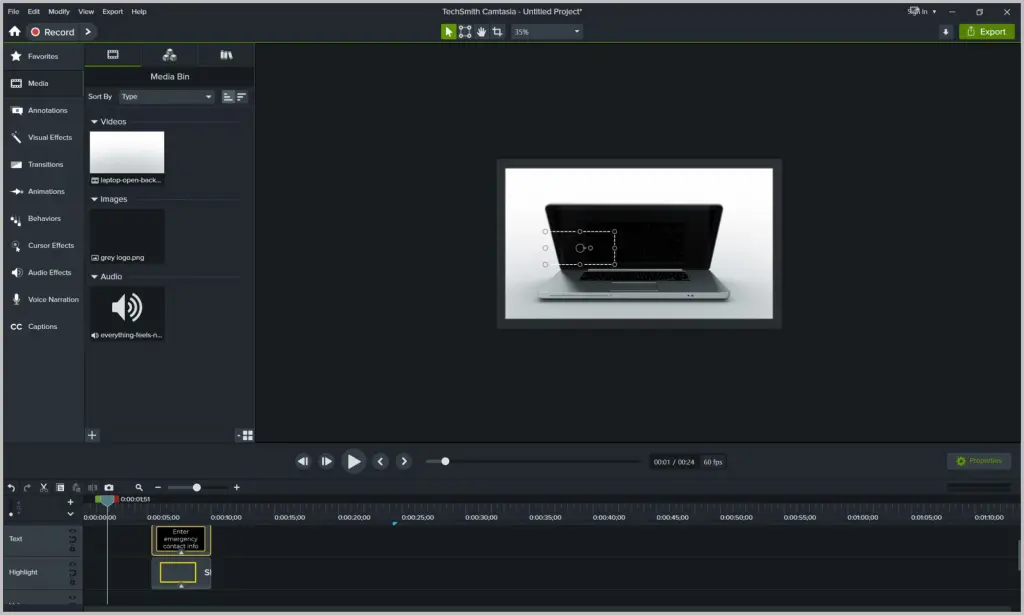
Script/Storyboarding
